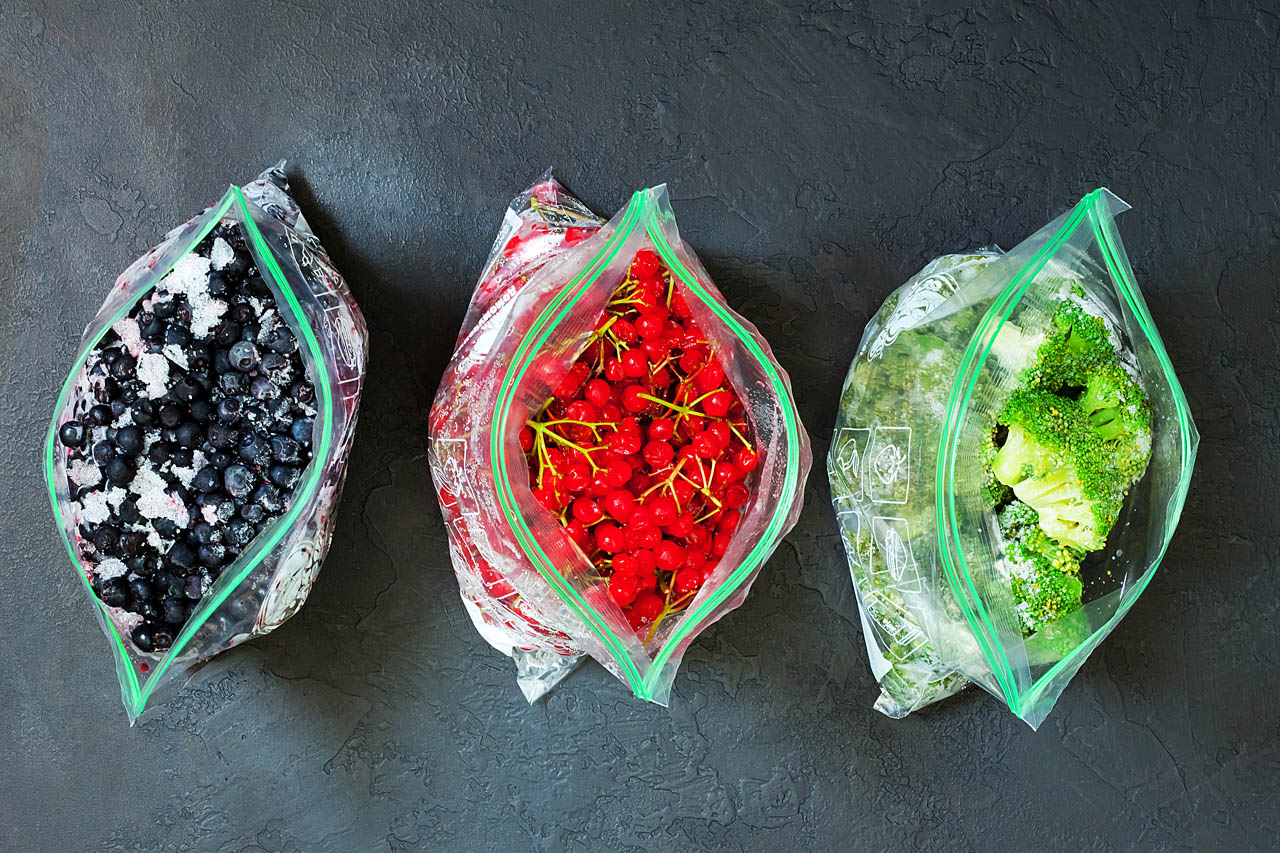
Your freezer is your friend in the fight against food waste. But have you ever opened the freezer to retrieve a carefully prepared meal or frozen item only to discover ice crystals blanketing the container? Or meat that looked a little too “off” in colour? If you’re nodding in agreement, you’ve encountered a simple case of freezer burn.
Many people don’t realize that they can burn frozen food. It sounds wrong, doesn’t it? How can something that’s frozen burn? Freezer burn is damage to frozen food caused by moisture in the food evaporating, leaving dry “pockets” of air and/or ice crystals. The good news is that, while the food won’t taste all that great, it is still edible. The better news is that freezer burn is totally preventable!
Related: Stop Wasting the Most Tossed-Out Food in Canada with These Recipes

The One Thing You Should Always Do to Prevent Freezer Burn
The most important thing you can do to prevent freezer burn is to reduce the food’s exposure to air: make sure you have an airtight, moisture-proof barrier between the food and the container it’s in. Simple tricks like wrapping foods in double layers of wax paper or aluminum foil before storing them in freezer-safe containers or bags will go a long way to making sure your food doesn’t go to waste.
Note that no food will last indefinitely without developing freezer burn, so another way to make sure you’re avoiding those pesky ice crystals from developing is to rotate the food in your freezer so you’re eating the oldest items first, which are the most at-risk of catching freezer burn.
Related: How to Freeze Fruit, Cheese, Leftovers and More
Top Tips for Avoiding Freezer Burn on Commonly Frozen Foods
1. If you’re serious about keeping frozen foods as fresh as possible, buy a vacuum sealer. This is a surefire way to make sure the packaging is completely airtight.

2. Buy too much bread? Slice loaves and store the slices in a large plastic freezer bag, making sure to remove as much air as possible. You’ll have fresh bread to toast for weeks to come!
3. Found yourself with too much produce? It can be frozen, but most vegetables benefit from a quick blanch or steam prior to freezing. Once cooked, shock with cold water, then dry and freeze in airtight containers or freezer bags.
Related: Effortless Instant Pot Freezer Meals for Easy Weeknights
More Tips to Keep in Mind When Freezing Food
1. Never freeze hot food. Instead, allow it to come to room temperature before you freeze.
2. If you’re freezing liquid-heavy foods (think soups and stews), make sure you leave some room in the containers, as liquid expands when frozen. Place plastic wrap touching the liquid/food before you close the lid to avoiding potential freezer burn.

Related: The One Healthy Soup That Should Always Be in Your Freezer
3. Broth and stock are super useful things to have on hand, but how often does a recipe call for a small amount, leaving you with leftovers? Solution? Freeze it in ice-cube trays! As soon as it’s frozen, transfer to an airtight bag or container to ensure a constant supply that’s practical in size.
4. Do you have slightly past-their-prime produce lingering in your crisper? Put your freezer to work. Frozen fruit is perfect for smoothies, and frozen vegetables can be used in cooked dishes. No one will ever know they were anything other than fresh!
5. Many people don’t think to freeze butter, but if you have a few sticks about to expire, pop them into the freezer to keep it fresh for longer. Note that it’s best to use quickly once thawed, making it perfect for baking!
Related: Building a Zero-Waste Kitchen is Easier Than You Think. Here’s How to Make it Happen
6. Cookie dough is a perfect candidate for freezing, so you’ll never be far from a freshly-baked treat! Scoop dough and freeze directly on baking trays. Once frozen solid, place the dough in airtight bags, or wrap them tightly in plastic and just bake however many you need. The dough will last in the freezer for up to three months.

Related: Anna Olson Explains How to Properly Freeze Just About Everything
7. Portion items when you freeze them so you can easily select the right amount of food to thaw, avoiding unnecessary waste.
8. Label all foods with the date you froze them, and don’t forget to rotate items and use older foods up first.

Related: How to Prep Slow Cooker Freezer Meals for Busy Nights
While freezing items is a great way to avoid waste, there are some other foods that you should never freeze.
5 Foods That Never Belong in Your Freezer (And Why):
1. Open packages of coffee beans (and ground) will absorb freezer smells. Make sure it’s stored in an airtight container, not the bag you bought it in.
2. Cooked pasta, like spaghetti, will not hold its structure when frozen and thawed, it will turn to mush (baked pasta dishes like lasagna, however, are perfect candidates for freezing).

3. Raw potatoes turn black when frozen due to a chemical reaction, so make sure to quickly blanch chopped potatoes before you freeze them.
4. Melon will turn mushy when frozen and thawed due to its high water content, so while it’s fine to use frozen in drinks, for example, it won’t be any good for a fruit salad.

5. Raw eggs in their shell will explode when frozen. If you find yourself needing to freeze eggs, crack them and lightly beat them before freezing them in an ice cube tray or muffin tin. When completely frozen, you can put them in a freezer bag where they will keep for up to six months.
Want to make the most of your freezer? Watch this video on how to prep food for freezing.
Feature image courtesy of Getty Images.
